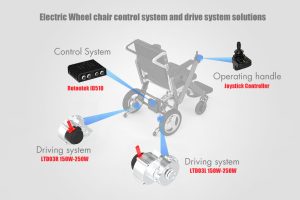Introduction
In the rapidly evolving field of electric mobility, micro electric vehicles (MEVs) stand out for their potential in urban transportation. The optimization of their electric powertrains is crucial for maximizing performance and range, critical factors that determine their appeal and utility.
Powertrain Components and Efficiency
Motor Selection
The choice of an electric motor significantly influences the MEV's performance. Motors with high torque and power density, such as permanent magnet synchronous motors, offer superior acceleration and efficiency. For example, a motor with a power output of 50 kW can provide sufficient thrust while maintaining compact dimensions.
Battery Technology and Capacity
Battery technology plays a pivotal role in determining the range. Lithium-ion batteries, with their high energy density of approximately 250 Wh/kg, are ideal for MEVs. A battery pack with a capacity of 20 kWh can ensure a range of up to 150 km under standard driving conditions.
Power Electronics and Control Systems
Advanced power electronics optimize the delivery of electric power to the motor. Using high-efficiency converters and inverters, with efficiencies exceeding 95%, minimizes energy loss. Additionally, intelligent control systems can adapt power delivery based on driving patterns, further enhancing efficiency.
Cost and Budget Considerations
Material Costs
The cost of materials like rare-earth elements in motors and lithium in batteries affects the overall budget. For instance, a high-performance motor may cost around $1,000, while a standard 20 kWh battery pack can cost upwards of $5,000.
Manufacturing and Scale
Economies of scale in production can reduce costs significantly. Bulk production can bring down the cost of a motor to $800 and a battery pack to $4,500, making MEVs more affordable.
Size and Specifications
Compact Design
The compact design of electric powertrains allows for more space-efficient MEVs. A motor with dimensions of 250 mm x 200 mm x 150 mm can fit easily in small vehicle frames, providing ample cabin space.
Weight Considerations
The weight of the powertrain components impacts the vehicle's efficiency. A motor weighing 30 kg and a battery pack of 150 kg ensure a balanced weight distribution, crucial for vehicle stability and handling.
Lifespan and Durability
Battery Life
The lifespan of the battery is a critical aspect. A quality lithium-ion battery can last for over 1,000 charge cycles, equating to approximately 150,000 km of driving.
Motor Durability
Electric motors have fewer moving parts than internal combustion engines, resulting in less wear and tear. A well-maintained motor can last upwards of 200,000 km.
Advantages and Limitations
Environmental Benefits
MEVs produce zero emissions at the point of use, making them environmentally friendly. The absence of tailpipe emissions reduces urban air pollution.
Range Limitations
One of the main challenges is the limited range compared to gasoline vehicles. However, with advancements in battery technology, this gap is steadily decreasing.
Charging Infrastructure
The availability of charging stations is crucial. Expanding the charging network can greatly enhance the practicality of MEVs.
For further details on Micro Electric Vehicles, visit RotonTek.
Conclusion
Optimizing electric powertrains for MEVs is key to maximizing their performance and range. By focusing on efficient motors, advanced batteries, and intelligent control systems, while considering cost, size, and lifespan, MEVs can become a more viable and attractive option for urban transportation.

